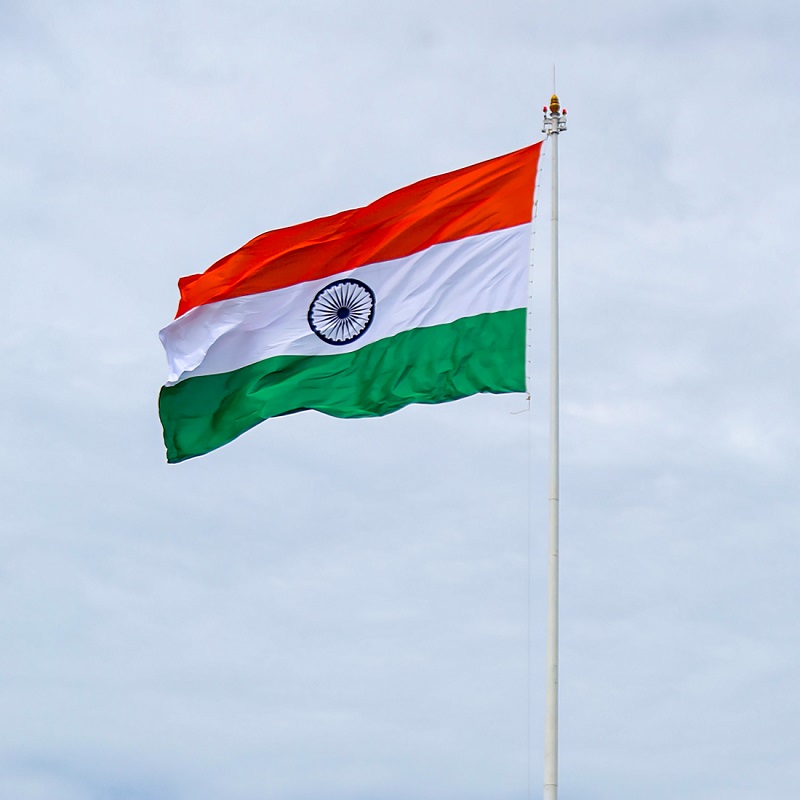
On this 75th Independence day, let us look at how our freedom fighters helped shape the India we see today.
At the time India got independence, there were more than 500 princely states, to be exact 565, in India that were not officially part of the British Empire. These 565 princely states covered nearly 48 per cent of the Pre-Independent Indian area. The smallest princely state was Vejanoness, while the biggest one was Hyderabad. Sardar Vallabh Bhai Patel, then home minister, was tasked to integrate princely states.

Indian Independence Act 1947
The Indian Independence Act of 1947 was important because it allowed the transfer of power from the Crown to India to be passed in British Parliament on July 5 that year and received the royal nod on July 18.
A plan was drafted to split the British Indian colonies into India and Pakistan by Viceroy of India Lord Mountbatten and Clement Attlee, then prime minister of Britain, on June 3, 1947, after consultations with – the Indian National Congress, the Muslim League and representatives of the Sikh community.
The option to choose either India or Pakistan or remain independent was provided to the princely states as per The Indian Independence Act of 1947. This decision was left solely to the people and the princely rulers of these states.
And this became a problem while trying to build a united nation, geographically or politically.
NEED TO UNITE STATES
Soon after the partition, the immediate challenge in front of the government was to unite a nation despite its diversity. The main task was to unite them without changing their background, language, religion or culture.
Establishing democracy was among the main challenges apart from ensuring the well-being and development of the Indian society.
The central government then had to evolve effective policies for poverty eradication and economic development.
Princely States Decisions
The rulers of Bhopal, Travancore, and Hyderabad had announced that the state had decided to be independent.
A non-democratic form of government was prevalent in the princely states, and most rulers were unwilling to part with absolute authority.
Other cities, including Amritsar, Lahore, and Kolkata, became ‘communal zones’. Hindus would avoid going into Muslim majority areas or vice versa. The country’s partition divided properties as well as political and administrative systems.
Interim Government’s Take
The interim government’s stance was rigid against dividing India into principalities of different sizes. The Muslims held a different opinion from Indian National Congress that the princely states should be given a choice to adopt any course they liked.
Sardar Vallabhbhai Patel, then the deputy prime minister and home minister of India, played a significant role in negotiating unification agreements with princely states hence incorporating many of them into the Indian Union.
There were 25 princely states in today’s Madhya Pradesh. Rajasthan had 22 big states. The list goes on. The government had to bring all of these states together.
AGREEMENT OF INTEGRATION BETWEEN STATES AND GOVERNMENT
Instrument of Accession was signed by the different rulers who made their respective states a part of the Union of India. However, accessing the princely states of Junagadh, Hyderabad, Kashmir, and Manipur proved more difficult than the rest. The issue of Junagarh was only resolved after the people voted they wanted to join the India union.
In the case of Hyderabad, the largest of the princely states, its ruler, the Nizam, entered into a Standstill Agreement with the Indian union in November 1947 for a year while negotiations with the Indian government were parallelly going on. In the meantime, the peasantry in the Telangana region, victims of Nizam’s oppressive rule, rose against him. After several protests and fights, the Nizam surrendered, leading to Hyderabad’s accession to India.
For Manipur, the Maharaja of the state, Bodhachandra Singh, signed the Instrument of Accession only after being assured that Manipur’s internal autonomy would be maintained. Later, succumbing to the pressure of public opinion, he held elections in Manipur in June 1948, giving the state identity of a constitutional monarchy. Thus making Manipur the first part of India to hold an election based on a universal adult franchise.
RE-ORGANISATION OF STATES
Drawing the internal boundaries of various states of India was the next big challenge after the “Instrument of Accession” was signed. The challenge included not just administrative divisions but also linguistic and cultural divisions. Our leaders felt carving out states based on language might lead to disruption and disintegration and is likely to draw attention away from other social and economic challenges the country faced. Hence, the central leadership decided to postpone matters.
The central government later formed a States Reorganisation Commission in 1953 to examine the question of redrawing the boundaries of states. In its report, the commission said the state’s boundaries should reflect the boundaries of different languages. Based on this report, the States Reorganisation Act was passed in 1956, which led to the creation of 14 states and six union territories. The linguistic re-organisation also gave some consistent basis to the drawing of state boundaries and did not lead to the breakdown of the country, as many had feared earlier. Rather, it strengthened national unity while accepting diversity.